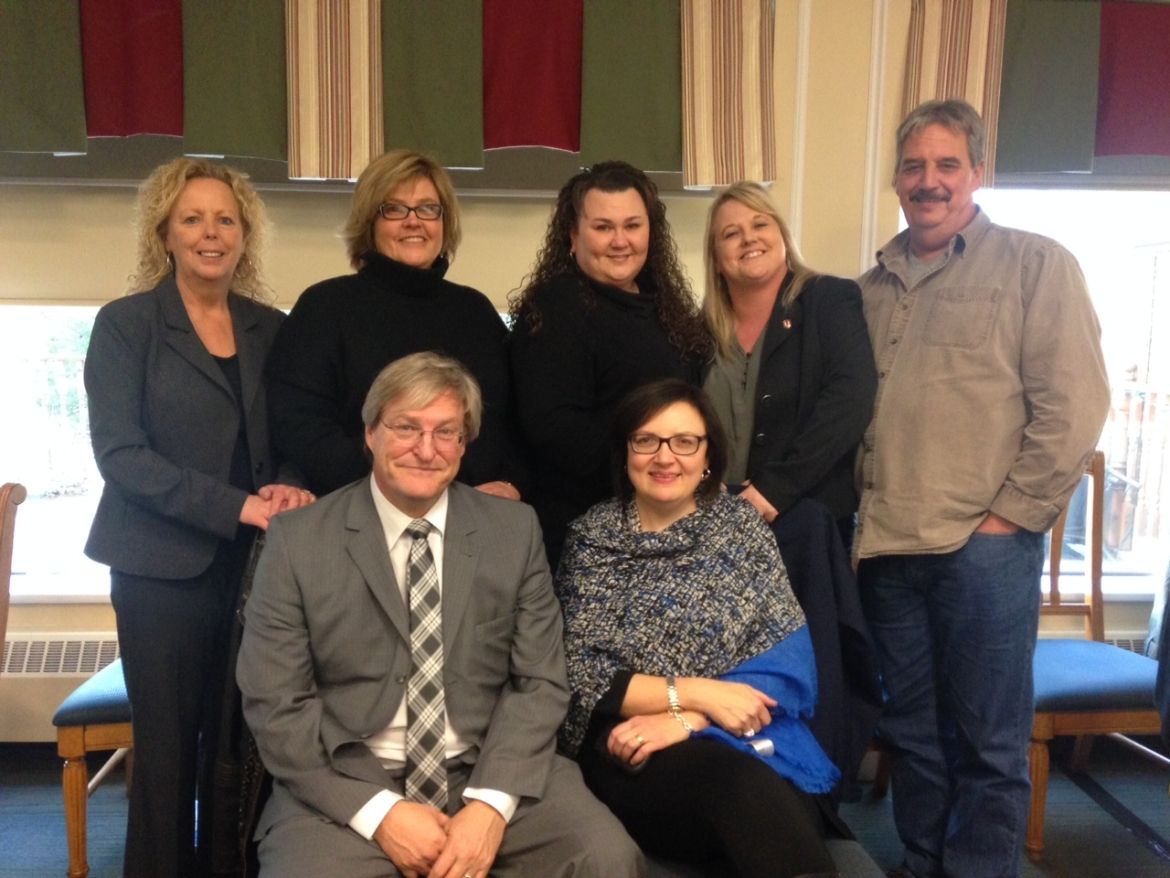
Share
Unifor was front and centre defending our more than 2,300 acute care members in Nova Scotia during week-long arbitration hearings resulting from the government’s egregious Bill 1.
The legislation proposes to shift Unifor members into other unions unless a compromise solution is “ordered” by the Arbitrator.
For example, without a compromised solution, Unifor stands to lose its more than 500 LPNs in the acute care sector to the Nova Scotia Nurses Union (NSNU) as the legislation states that RNs and LPNs must be part of the same bargaining unit. The legislation also outlines that all 24,000 workers in acute care be divided into four bargaining units, with the four health care unions representing one of the units in which they have already represented members. As Unifor did not represent any clerical workers, we cannot in future be the bargaining agent for those workers. Since the nurses’ union only represented members assigned to the nursing bargaining unit that means that union would be the only union allowed to represent nurses and LPNs. This leaves Unifor with members in the two remaining units – health care and service support.
Union proposal for bargaining associations
Unifor, and CUPE, worked very hard to put forward an alternative remedy during arbitration, one that included a multi-union bargaining association. This would have allowed Unifor members to remain proud Unifor members, protecting their freedom of association rights, while giving the government what it wanted – four province-wide bargaining units and four province-wide collective agreements in the sectors of nursing, health care, service support and clerical.
The decision is now in the hands of Arbitrator James Dorsey, who according to the legislation must submit a final report and decision to the parties by January 1 but at his request was granted an extension by the health minister until January 19.
Going into arbitration, Unifor was clear about its position.
“This was about protecting our members, their Charter rights, their working conditions, their hard-fought gains achieved over many years in collective bargaining. It was about finding a means so that Unifor members could remain proud Unifor members,” said
Lana Payne, Atlantic regional director.
It was also about finding a solution that prevented the pitting of worker against worker and union and against union which Bill 1 promotes.
But it was also about health care and the impact restructuring will have on health care workers and the health care system in Nova Scotia.
Government plan doesn’t avoid chaos
The kind of radical and quick change being proposed by the employers and the government will result in much turmoil, upheaval, confusion and chaos in health care workplaces, said Payne.
While the focus of the debate has been on union representation, the issue of what impact this will have on health care has not been getting near enough attention.
Unifor’s lawyer Barry Wadsworth made clear, throughout the arbitration, that the legislation and the arbitrator’s decisions will have a profound impact on our members and on health care.
“Health care workers are the health care system,” Wadsworth reminded those gathered for the week-long hearings.
Unifor’s lawyer made impassioned and detailed arguments
There was little doubt that Unifor and Unifor’s lawyer made an impression.
Even lawyers for the other unions as well as for the employers were impressed, praising Barry Wadsworth for his well-formed arguments and “extremely compelling” advocacy on behalf of our members. It was indeed inspired advocacy backed up by strong legal arguments and recommendations to the arbitrator.
Testimony from the employer representatives highlighted that including serious upheaval and radical change, restructuring appears to be a case of “hurry up and wait.”
Wadsworth noted that the employer has said nothing will be different as of April 1, as the system is not ready yet. The implementation of new models of care will take time. The implementation of a computer system for payroll (estimated to be ready by September 2015) will take time.
“Why does nothing have to change on April 2 except everything to do with workers?” asked Wadsworth who argued that any decision the arbitrator makes must comply with the workers’ rights under the Charter of Rights and Freedoms.
Wadsworth emphasized the impact the government’s plan would have on health care workers and the quality of care. He specifically noted that while Bill 1 states it was designed to achieve “stable and harmonious labour relations” it actually works contrary to that by causing massive upheaval and disharmony between workers, the unions that would be appointed to represent them and even the health care managers they have been working with for decades to solve labour problems.
“Workers must trust their bargaining agent, and this trust takes time – sometimes years – to build,” said Wadsworth. “Our proposal for bargaining associations will meet all of the government’s objectives and provide the labour peace the government says it wants. It is unreasonable to think that a shuffling of members between unions will end harmoniously.”
He likened Bill 1 to a situation of “owning the ball” and “fixing the game.”
“Here we have a government choosing the teams, who will be on the teams, what game they will play, who gets to be the captain and then when the collective agreement comes up for bargaining, unions will be disorganized and divided because of the legislation. The game has been fixed.” He encouraged Mr. Dorsey to find the balance that labour relations laws are supposed to uphold.
Still hope for a balanced decision
There is a way to protect workers’ rights, including their freedom of association rights while ensuring the government can deliver on its goals of streamlined collective bargaining and fewer collective agreements.
He called on Arbitrator Dorsey to find that balance because with Bill 1 the government has tipped the scales in favour of the employer and the “employer is taking this moment to try and win the game.”
CUPE similarly argued the remedy put forward by Unifor.
In the meantime, the NSGEU continued to call for votes among the 24,000 health care workers.
Unifor has been clear from the beginning (as were all the other unions) that votes, like the carving up of members, would add chaos and upheaval and much disruption to the health care system and for health care workers. “Run-off votes will result in no less disruption to the lives of employers than the government’s plan.”
The NSNU, under the arbitration phase of the legislation, stands to gain thousands of new members from all the unions. They argued why they were best to represent nurses.
Unifor argued that LPNs would be better served in a health care bargaining unit, where the majority of them are today and reflect a long history of community of interest.
Wadsworth argued that unions are more than just collective bargaining agents. “They are social institutions and the means by which members cannot only change their working lives, but their communities and their country.”
Health care workers “have been patient-centred every day of their working lives. It’s the systems around them that haven’t been. What we have argued for and proposed can be accomplished while meeting the government’s three objectives and while respecting the people who do the work that governments across Canada say is their number one priority – health care,” concluded Wadsworth.
A strong team to defend Unifor members
(From left to right, back row: Susan Taylor, Shawna Wilcox, Susan Gill, Linda MacNeil, Jim Mott. Front row: Barry Wadsworth, Lana Payne.)Unifor’s Atlantic regional director, who worked with Wadsworth, thanked Unifor local health care leaders and Atlantic servicing staff for their support and solidarity throughout what has been a pretty grueling year.
Susan Taylor and Linda MacNeil, who service in the health care sector, were critical players in the union’s work on this over the past year, she said.
Our local union leaders and members were outstanding throughout, she said. “They held their heads high, they took the high road, and they stood strong and proud. Most of all, they passionately represented our members with heart and hard work. I can’t thank them enough



